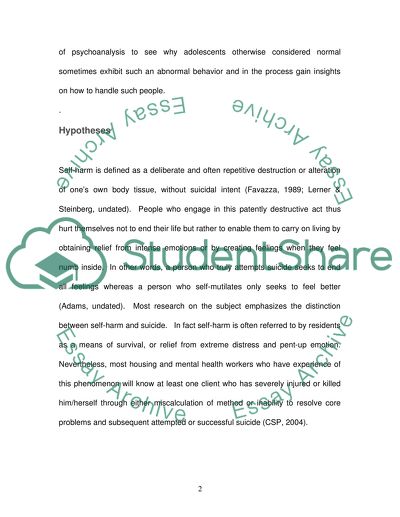Cite this document
(“Self-Harm in Adolescence Essay Example | Topics and Well Written Essays - 3000 words”, n.d.)
Retrieved from https://studentshare.org/psychology/1517193-self-harm-in-adolescence
Retrieved from https://studentshare.org/psychology/1517193-self-harm-in-adolescence
(Self-Harm in Adolescence Essay Example | Topics and Well Written Essays - 3000 Words)
https://studentshare.org/psychology/1517193-self-harm-in-adolescence.
https://studentshare.org/psychology/1517193-self-harm-in-adolescence.
“Self-Harm in Adolescence Essay Example | Topics and Well Written Essays - 3000 Words”, n.d. https://studentshare.org/psychology/1517193-self-harm-in-adolescence.


